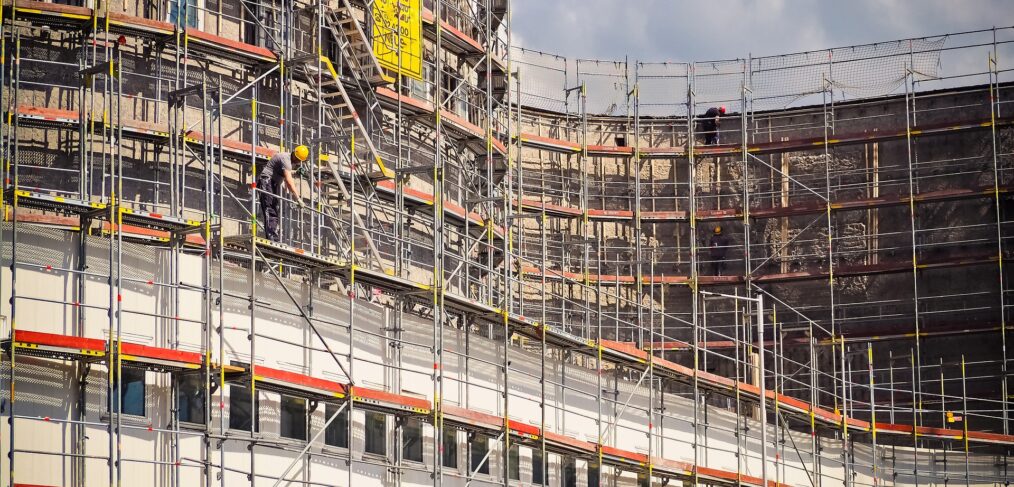
Renovation wave could bring millions of jobs
As economies across the European Union struggle to recover from the Covid19 crisis, setting off an ambitious renovation wave could be the win-win-win solution everyone is looking for – kick-starting economic activity and creating employment, lowering citizens’ energy bills, while at the same time paving the way towards a climate-neutral future.
The building sector holds enormous potential in more than one way. Construction is a crucial pillar of the EU economy. Counting in raw material suppliers, construction companies, material and equipment manufacturers, consulting and energy services, it represents around 8.2 % of the EU’s GDP and accounts for around 10 % of its total employment[1]. Consequently, scaling up the speed and increasing the rate of deep renovation would benefit local value and job creation.
This is especially desirable as the European construction sector consists nearly exclusively of micro, small and medium-sized enterprises (SMEs), with micro-enterprises accounting for 94.1 % of the sector[2]. A recent study published by the independent research centre Buildings Performance Institute Europe (BPIE) concluded, that for every € 1 million invested in the energy renovation of buildings, an average of 18 jobs are created in the EU[3].
Creating win-win-win-situations
As an indirect effect, public health expenses will shrink. Higher quality private housings, office buildings or hospitals improve the health of inhabitants, employees and patients. Air pollution through outdated heating systems causes pulmonary diseases and increases the risk for cardiovascular diseases. According to data from the European Environmental Agency, air pollution is responsible for 400.000 premature deaths in the European Union[4].There is even evidence that energy-efficient renovation of office buildings is linked to an increased productivity of employees, BPIE estimates a potential benefit of about € 500 billion to the economy per year[5].
A renovation wave would tackle energy poverty, a major factor of social inequality. Lower income households typically live in housings with poor energy efficiency standards, often lacking insulation or modern heating appliances. This leads to higher expenses for heating and warm water, putting a further strain on narrow household budgets. Energy renovation, subsidised by public money, lowers these expenses, relieving financial pressure and bridging some social gaps. Public and social housings should therefore be a primary target of renovation ambitions. This social pillar must be part of the declared European goal to leave no one behind in the recovery process.
Renovation and the climate
Improving the energy efficiency of buildings is an easy and cost-efficient way to reduce CO2 emissions permanently. The technological solutions are available at market scale. Energy consumption of buildings accounts for approximately 40 % of total EU energy consumption and for 36 % of all CO2 emissions. Achieving climate neutrality will only be possible with a massive reduction of the energy consumption of buildings, wherever possible, deploying renewable energy as solar panels on roofs and facades in addition to deep renovation.
The pace at which buildings are renovated is too low. The annual average energy renovation rate in the European Union is stuck at 1 %, with deep energy renovations accounting for only 0.2 – 0.3 %.[6] With the annual new build rate being 1 %, the major part of the building stock in 2050, the year the European Union wants to meet its zero emission goal, will be buildings already standing today. Therefore, energy renovation today should be a deep retrofit, aiming for the highest energy efficiency possible.
The way forward
To trigger private investment and innovation in the building sector, a clear European roadmap is necessary to give companies and house owners security for energy renovation projects. Regulatory action should include mandatory minimum performance standards for energy efficiency of buildings, binding minimum annual renovation rates for buildings and an extension of the Eco-Design Directive to construction materials. Making energy renovation a key priority in the spending of recovery funds would truly deliver on the Green Deal and increase the wellbeing of citizens.
One-stop-shops, capacity building for municipalities, and the active involvement of local actors have a track record of success in this field. Pilot projects such as the manufacturing of facade elements with double advantage – insulation on the inside, solar panels on the outside – could be launched. New business models such as energy performance contracting and energy service companies could play an important role in renovations, complementing the construction eco-system.
It is high time for a renovation wave to unleash all the economic and climate potential of the construction sector.
[1] Building Renovation: A kick-starter for the EU recovery, BPIE, p. 6.
[2] Building Renovation: A kick-starter for the EU recovery, BPIE, p. 5.
[3] Building Renovation: A kick-starter for the EU recovery, BPIE, p. 3.
[4] website accessed July 9th 2020: https://www.eea.europa.eu/media/newsreleases/many-europeans-still-exposed-to-air-pollution-2015/premature-deaths-attributable-to-air-pollution
[5] Building Renovation: A kick-starter for the EU recovery, BPIE, p. 3.
[6] Building Renovation: A kick-starter for the EU recovery, BPIE, p. 4.
